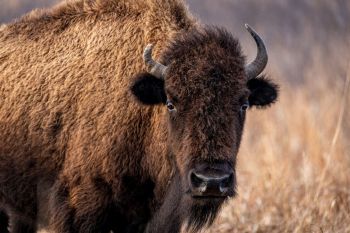Sustainable Agriculture

An important goal for Canada's bison producers
The reintroduction of bison to the Canadian plains by farmers, ranchers and conservation agencies has been a positive development for the environment. Following the near destruction of Canada's bison herds in the late 19th century, millions of hectares of the native grassland habitat of the prairies was converted to growing grain. The prairie sod, with its rich mosaic of animals and plants, was drastically altered to support the production of a handful of agricultural crops - primarily wheat.
Today, bison ranching plays an important role in the preservation of the last remnants of native grassland habitat on the prairies of providing an economically viable alternative to cultivation. Besides preserving the islands of natural grassland that have survived agricultural settlement, bison ranching encourages the return of farmed land to grassland. Over the past three decades, many Canadian grain and oil seed farmers have entered the bison industry and for most part, the decision to raise bison involves taking large tracts of land out of mono-crop cultivation and seeding a permanent cover of grass.
Clearly the shift from cultivation to pastoral pursuits like raising bison substantially is good for the planet, our environment and enhancing the diversity of our species. And because a growing population of consumers appreciates the nutritional advantages of bison meat, raising bison offers producers the opportunity to generate respectable financial returns as well contributing to an improved environment.



